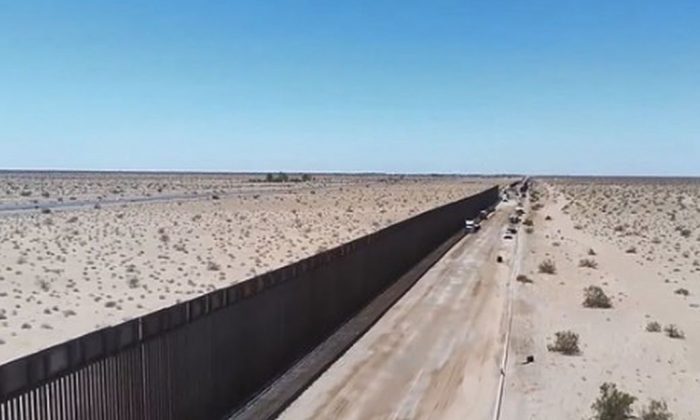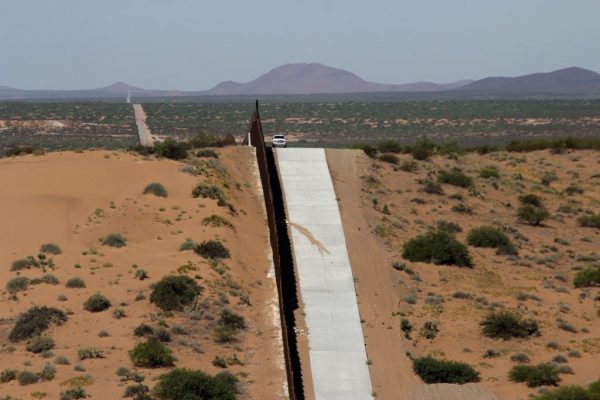Does it exonerate Comey, as he claims?
What is the significance of
Bruce Ohr’s interview records, the FBI “302s,” with
Christopher Steele? What else might be found in other Steele-related documents?
And in the Michael Flynn legal case, why is the prosecution insistent on withholding access to unredacted Ohr 302s and texts between then-FBI officials Peter Strzok and
Lisa Page?
Fitton, president of Judicial Watch, which uses Freedom of Information Act (FOIA) requests and litigation to expose government corruption, recently spoke with Epoch Times senior editor Jan Jekielek.
They discussed the IG report and what Fitton describes as “Comey’s ambush interview of President-elect
Trump” in 2017, as also explored FBI 302s of Ohr’s interviews with Steele, Flynn’s attorney Sidney Powell seeking unredacted documents in her defense of Flynn, Judicial Watch’s new discovery on the Hillary
Clinton emails, as well as the government watchdog’s lawsuit against sanctuary policies in California.
Mr. Jekielek: Tom, last week, this new inspector general report about James Comey dropped. Tell me what you saw in it.
Mr. Fitton: Well, the first thing is, it’s really outrageous that the
Justice Department has evidently declined to prosecute James Comey for the misconduct and criminality outlined in the IG report. And that’s what I see in the IG report—significant criminality by … fired FBI Director James Comey. And I encourage everyone to read the IG report because it really explains the coup-plotting and thinking of the coup plotters. Because it’s more than just about whether Comey took memos on what President [Donald] Trump was telling him and keeping them at his home and then illegally leaking them. And among all those memos was classified information which he shouldn’t have had and which he shouldn’t have shared—all of which he could have been prosecuted for.
But I thought the biggest aspect of the IG report was the description of Comey’s ambush interview or meeting with President Trump or then-President-elect Trump in the beginning of 2017. They had had a meeting a few days before, I think, with the president and the vice president and other senior leadership, and they talked about the dossier—the salacious and unverified dossier. And those terms are Comey’s terms. And he said, well, we’re going to have to brief President Trump on this—or then President-elect Trump. And the supposed reason for the briefing, generally, was to talk about Russian interference in the campaign.
But it’s evident the real reason was to confront him with this dossier, because they were investigating him, and they wanted to know what his reaction was. So Comey was playing spy against then-President-elect Trump. And, obviously, the dossier was fraudulent. They knew it was salacious and unverified, and yet, they threw it in his face with the hopes of getting a reaction they could then use against him.
And the report details how Comey goes downstairs and there’s a laptop, a secure laptop waiting in his car, and he immediately begins typing away about this preplanned assault on the president. And he goes to his office—I guess there’s a field office of New York—and he immediately begins a secure video teleconference with his colleagues, including it looks like Lisa Page and Peter Strzok.
So this was this ambush interview of President-elect Trump. And it’s pretty clear all of Comey’s interactions with Trump, because he was memorializing him, were part of a spy operation against President Trump to try to get him and destroy him. That’s what the IG report is about.
So, however disappointing the failure to prosecute him for keeping those FBI files he had on Trump at his home and then leaking them is, it’s as important to know that the FBI director initially tasked by President Barack Obama, certainly with his acquiescence, was spying on President elect-Trump and then President Trump. And then on top of it, he leaks this information as part of a vendetta after he’s fired, with the hopes of getting a special counsel appointed. And, of course, he got his special counsel, his friend
Robert Mueller.
So it highlights just how base the criminality was of Mr. Comey. It highlights the corrupt formation of the special counsel. And it shows that the coup-plotting was real.
Mr. Jekielek: Tom, I read some of what James Comey’s response to the report was, and it’s almost like … Are we talking about the same report here? I mean, he was saying it exonerates him. This doesn’t seem to match up very well.
Mr. Fitton: Well, that’s why it’s good for Americans to be able to read the document for themselves. It doesn’t exonerate him. And I don’t know why he wasn’t prosecuted, but he’s lucky he wasn’t. He should have been prosecuted. He certainly had FBI files he shouldn’t have had.
At one point … I mean, this is worth repeating. So he has the FBI over at his home and he’s talking about documents and he said, well, I’ve got these other documents here. You want them? They’re like, of course we want them. But he didn’t tell them at the time that he leaked them. And of course some of it was classified. So these same people are watching him the next day testify to Congress. And he says, well, I gave them to my friend, Mr. Richmond, who was the professor friend who’s the designated leaker.
And the IG report recounts that the FBI general counsel, upon seeing that, ran down the hall with Strzok, literally ran down the hall with Strzok to go and call Richmond because they knew he had classified information he shouldn’t have and they needed to retrieve it.
If anyone else had pulled that with the FBI, played games with whether they had classified information, and whether they shared it, and they found out about it, they would have been arrested, and there would’ve been a raid on their home to figure out what other potential material they had.
So read the IG report, read the IG’s conclusions. He had documents he had no business hiding.
And the dishonesty, even in dealing with the IG, is incredible. Because the IG says, why would you think these are personal documents? You were talking to the president about business, you know, even at dinner. And he says, well, yeah, I was there as FBI director, but I was also there as a human being. So that’s not a credible answer. And, frankly, it just shows me that Comey thought he could do no wrong. And it’s a shame the Justice Department allows him to continue to think that by refusing to prosecute him.
Mr. Jekielek: So is that it for Comey?
Mr. Fitton: I don’t see any further prosecution of Comey. It would be a pleasant surprise. I mean, to me this is a straightforward issue. He confessed to leaking the FBI files—they were classified. He was engaging this elicit spying on President Trump. I mean, that’s Spygate in essence.
So the idea that the IG report is going to come up and confirm what we already know, that the FISA warrants were fraudulently obtained, therefore illegally obtained, and that new prosecutions will rise out of that. I’d be surprised, but pleasantly so.
But that’s why Judicial Watch does our work because, even with Comey’s IG report, it confirmed with new details what we already knew, thanks to Judicial Watch disclosures through the FOIA. The same with the FISA-gate. We’ll get more details, but there’s been reporting, there’s been documents we’ve obtained through FOIA that we’ll talk about from the FBI itself recently that show you there’s more than enough to initiate prosecutions now. They don’t have to wait for an IG. … They’re not going to launch a prosecution immediately upon an IG report anyway. They have to do their own investigation and question people before grand juries and with their lawyers. So I just don’t see it happening.
Mr. Jekielek: Speaking of some of these documents, there were these FBI 302s from Christopher Steele, a lot of them that you released. Can you tell me a little bit about these and, maybe for the benefit of our audience, what is a 302? We’ve heard that term; I don’t think everyone knows.
Mr. Fitton: Yeah, there are all these acronyms and the numbers of a form that only those of us in Washington know about. But an FBI 302 is a narrative report created by FBI agents or officials about witness interviews or subject interviews. So if you had an interview with me, you go back and write a 302 report describing … what happened at the interview. They don’t record the interviews. So, in many ways, they’re kind of a shady way of conducting investigations, in my view. Nevertheless, they’re the documentary record of FBI activities and investigations.
We received, because of our lawsuit, the Justice Department- and the FBI-declassified 302 reports of FBI interviews with Bruce Ohr. Who’s Bruce Ohr? A senior official of the Justice Department. His wife, Nellie Ohr, worked for the
Fusion GPS spy ring hired by the Clinton DNC gang. And Bruce Ohr was used as a conduit or a cutout to talk to Steele and Fusion GPS after the FBI cut Steele off as a paid informant because he was an untrustworthy leaker. So Bruce Ohr, whose wife is working there, outrageously uses the FBI to continue to launder this dossier information to the FBI. And this is occurring after the president is elected and the first part of his term.
And now the 302s show that Bruce Ohr told them, look, Steele is anti-Trump. He was quote, “desperate” to stop him. It’s pretty clear that the dossier wasn’t panning out.
So you have all this garbage dossier information being given to Bruce Ohr, who’s then giving it to the FBI. So you’ve got to … of course, Bruce Ohr is Justice Department, so you’ve got DOJ and FBI covered at the same time. And it talks about them giving them information and taking out … For instance, Nellie Ohr was going to give them her Fusion GPS research targeting Trump. And Ohr said, yeah, we’re going to do that. … And they were planning to take out the Fusion GPS markings from the documents.
Mr. Jekielek: I see. And just as if it were from Steele? Or how was that going to work?
Mr. Fitton: Why would you want to disguise that unless you were up to no good? So, obviously, Bruce Ohr should never have been put in that position. He was conflicted. It was inappropriate for a senior Justice Department official to be playing spy games with Fusion GPS and Steele, who was persona non grata over at the FBI as it was.
But it’s pretty clear the FBI was desperate to get Steele information because it wasn’t panning out. If they had what they needed to get Trump, they wouldn’t be using these improper vehicles like Ohr to get access to Steele and Fusion GPS. And then we get another set of documents showing that Nellie Ohr indeed is putting all the material with her husband, and he’s giving it to the FBI.
So all of the dossier material was being laundered, not only from Steele, but from Nellie Ohr, who was in regular communication with the Justice Department about all things related to Russia, certainly all things related to Trump. So, remember, Nellie Ohr worked for Fusion GPS, who was paid for by Clinton and the Democratic National Committee. So when you look at the voluminous email traffic between Nellie Ohr, Fusion GPS, and Bruce Ohr, it’s pretty clear Fusion GPS may as well have had an office at the Justice Department, with Nellie Ohr manning the desk.
Mr. Jekielek: I was reading that there was a federal court that has ordered the FBI to do more searches on Steele-related documents. So do you think there’s still more out there?
Mr. Fitton: Oh, there is because they cut it off at the time Mueller was hired.
Mr. Jekielek: I see.
Mr. Fitton: These FBI 302s talk about the FBI’s efforts to reach out to Steele up until Mueller’s hired. Then, there’s nothing. So the Justice Department and the FBI incredibly came and told the court that we shouldn’t go there because Steele has some privacy interests here that need to be protected. And the court said, are you kidding me? Are you kidding me? Search for the document. You’ve got 60 days. If you want us to try asserting privacy, then you can try asserting privacy, redactions, or exemptions to withhold information. But let’s find what the documents are and then we can fight about whether you can withhold them or not. They didn’t even want to look for them. They were trying to cover it up and thankfully a court said, no, you have 60 days.
Mr. Jekielek: What do you think is in there?
Mr. Fitton: It’s going to show Mueller’s collusion with Steele. I’m convinced that’s what it’s going to show.
Mr. Jekielek: Oh, really?
Mr. Fitton: Because the FBI began working for Mueller on Russiagate. And so that’s what it’s going to show—that Mueller was using the shady
Steele dossier as well to target President Trump.
Mr. Jekielek: Now that that would be quite the bombshell, wouldn’t it?
Mr. Fitton: It would be, but you know, we’ll see what happens. Why else would they make such extraordinary arguments to cover up or stop this information from coming forward? If it were good, it’d be released.
Mr. Jekielek: Speaking of 302s, actually, another thing that has come up is … Sidney Powell, Gen. Flynn’s lawyer … is basically seeking access to these unredacted Bruce Ohr 302s and also Page-Strzok texts unredacted. And they’re going to extraordinary lengths, it seems, to not provide those.
Mr. Fitton: Well, that’s the underlying basis of the Flynn prosecution. I don’t know why they wouldn’t be relevant. And I think she has a strong case.
Mr. Jekielek: Why do you think they’re so adamant in not providing these things?
Mr. Fitton: Because the Flynn prosecution was corrupt, and I think Sidney Powell understands that and that’s why she’s pushing for these documents to expose the level of corruption. You know, Gen. Flynn had every right to talk to the Russian ambassador, as incoming national security adviser. He did nothing wrong in talking to them. I think it’s pretty clear he didn’t lie during the ambush FBI interview that was improperly obtained by Comey and Andrew McCabe in the beginning of President Trump’s administration. That whole prosecution has been one ugly mess.
Mr. Jekielek: A lot of people are very curious to see what will come of that. Are there any other documents that you are hunting for right now that we should be aware of?
Mr. Fitton: Well, we want the unredacted FISA applications. There’s more that can be unredacted or declassified. The big declassified group of records we received was the 302s. Those were secret documents, and they were declassified, thanks to Judicial Watch’s Freedom of Information Act litigation.
It’s pretty clear the Justice Department is just slow-walking the release of information. The FBI is a complete stonewall. They are telling us they have Page-Strzok records that they don’t want to process and turn over to us until 2021. So they’ve got 13,000 records. They only want to process 500 pages a month. … And they don’t want to give us text messages, generally speaking. They, as I said, they were in court trying to protect Steele’s privacy. I mean, they are defending Obama and Clinton still over at the FBI and, frankly, the Justice Department.
Mr. Jekielek: What do you think about this new Justice Department IG report about the FISA abuse? That should be coming soon. Where are we with that in your mind?
Mr. Fitton: I don’t know. If it comes out, it suggests that there’ll be no prosecutions because the Comey IG report was only released after the DOJ was given a chance to decide whether to prosecute. And because, I guess, the IG was thinking that we don’t want to release this information because it might get in the way of prosecution. It may be if we see the IG FISA report, the fact that we’re seeing it may tell us there’ll be no prosecution or prosecutions of anyone related to the illegal spying, targeting, leaking, and all of that that took place to try to overthrow the president.
Mr. Jekielek: Another thing that a lot of people are asking about—I’m wondering if you have any new thoughts on this—is the CIA involvement. Some lines of evidence suggest the CIA was also involved in all of this in a deeper way. Do you have any thoughts on that?
Mr. Fitton: Well, it looks [like] one of the associates with Stefan Halper was potentially a CIA person. John Brennan, the former head of the CIA under Obama, has been a big cheerleader for the coup cabal and was involved in that ambush interview of President-elect Trump in January that we talked about earlier in the interview. The CIA has been largely protected from too much scrutiny here, and they’ve obviously been withholding information in a way that the DOJ and the FBI haven’t been able to.
Mr. Jekielek: You don’t seem like you’re expecting to see a lot of prosecution happening here as a result of this.
Mr. Fitton: It would be a change. I mean, it would be a dramatic reversal of … let me put it another way. Past experience tells us nothing will happen, but maybe something will happen. Maybe Attorney General [William] Barr will push for prosecutions over the objections of the deep state. Remember, the Justice Department is run by a handful of Trump appointees, surrounded by smart but dishonest liberal, left-leaning, partisan Democrats. That’s the Justice Department.
So to get any prosecutions out of that agency from the pure career civil servants, that’s going to be tough if it’s going to be targeting the leadership of the Democratic foreign policy world and intelligence system. That’s why we’re doing the work in the meantime, because nothing’s going to happen if we don’t know the full truth of the corruption. So we’re convinced that by getting the information out, it can contribute to public pressure for full accountability and maybe prosecutions.
Mr. Jekielek: A court has ordered new discovery around the Clinton emails—the whole case that Judicial Watch started. And I’m wondering if you could tell us a little bit more about where that’s going. And I understand you intend to depose Hillary Clinton.
Mr. Fitton: We hope to. Well, the court already had granted us discovery. This was a case where we asked about the Benghazi talking points, the infamous talking points that lied to America under the Obama administration about the terrorist attack on Benghazi, when they said it was about a video and not a terrorist attack. We noticed there were no Clinton emails. And so we pushed on that and it was that litigation that led to the disclosure, in our view, of [the] Clinton email issue.
Now, the court was interested in granting us discovery to find out whether Mrs. Clinton used that system to avoid FOIA, whether they were trying to game the court in shutting the case down before they disclosed the Clinton emails to us, and exactly where her other emails might be that would be responsive to our FOIA and need to be searched. So they granted us discovery. We deposed already 10 or 11 witnesses, and the witnesses in the documents we’ve uncovered show the Obama White House was involved in the cover-up. The State Department knew full well about the Clinton emails, but was cagey to put it charitably and was misleading and lying about what they knew and when to the courts, and to requesters for documents that would be impacted by her email system. Mrs. Clinton was warned repeatedly about her email use, but obviously, she continued to do whatever she wanted to do.
So the court wanted a status update, and we came back and said, this is what we’ve found. We found more information that’s raised additional questions. The court agreed with us, and granted us new witnesses—I think there are about eight or nine witnesses. And Mrs. Clinton and her top aide Cheryl Mills were also requested to be questioned in person under oath. And he gave them 30 days to respond and to oppose presumably what we’re trying to do.
So that was a great victory. So it’s significant new discovery into trying to figure out who knew what and when about the cover-up. But what was really outrageous is we were opposed … just two weeks ago in federal court by the Justice Department and State Department. [They] said that we should get no additional discovery, was defending the State Department’s handling of that FOIA cover-up, that Clinton email cover-up, and obviously didn’t want Clinton or Mills to answer any more questions. Incredible.
Mr. Jekielek: I’ve been tracking public opinion around this issue, and there’s a lot of people who are basically saying enough already, why do you keep bringing up these Clinton emails, and so forth. Why is this so important to you?
Mr. Fitton: The court wants answers. So that’s why it’s important. There was corruption of the courts, it looks like. And we have a right to the documents under the law and what Mrs. Clinton was doing and she knew … look, we’ve had a long history of Mrs. Clinton. She knows what Judicial Watch does. She knows her emails would have been subject to disclosure under FOIA, and she tried to hide them.
We want to know what she was trying to hide. We have a right to the documents under law. And it’s more important than ever that we do this work, especially since the Justice Department not only has conducted the FBI sham investigations that protected her from the potential criminal consequences of her crimes, but are actually still defending her. What’s outrageous is that … many of these issues could have been solved, and we could have had answers years ago, but we’ve been fought every step of the way, either by the cover-up of Mrs. Clinton most directly, or the Justice Department fighting us every step of the way.
And it hasn’t changed with the new administration. The deep state is still running things over at the Justice Department. I think Attorney General Barr’s a good guy, and I admire what he has to say about Russiagate and Spygate and such. But these lawyers are being allowed to run amok and do whatever they want in terms of obstructing our efforts to get the truth, as both the courts want and the law requires.
Mr. Jekielek: Tom, tell me a little bit about this new lawsuit that you’re pursuing in Santa Clara versus their sanctuary policy. That’s kind of a new thing that you guys are into, right?
Mr. Fitton: Look, Santa Clara County (San Jose), California, has this sanctuary policy that allows illegal alien criminals to be released onto the streets. It led to an infamous murder recently. They pretended to amend their sanctuary policy by saying the feds need a judicial arrest warrant before they’ll keep any criminal aliens in detention for the feds. And all the feds are asking for when the ICE asks a locality to hold someone is, you know, hold this person or give us a heads up for a day or two, so we can figure out whether we want to take them into custody and deport them or not. And they’re letting these folks out, so you’ve got this carnage on the streets as a result of the sanctuary policies and specifically in Santa Clara. We have a taxpayer lawsuit—taxpayers can sue in California to stop the expenditure of tax dollars on illegal activity. So we alleged these sanctuary policies are illegal, in contravention of federal law, and other specifications in the case. You can see that online at our website at judicialwatch.org. We’re battling it directly.
We already have a lawsuit, a similar lawsuit against the San Francisco Sheriff’s Department trying to stop that sanctuary policy. That goes to trial or is scheduled for trial in the early part of next year. So we’ve been looking at this issue for a long time.
We’ve been pressing back on these sanctuary policies because these sanctuary policies … you know, you can have a wall, but it won’t work as well as it otherwise would, if every major city and every major county has essentially a welcome sign for criminal illegal aliens. You come here, we’ll protect you. In fact, we’ll aid and abet you in terms of you’re trying to avoid the consequences of your criminal behavior, both as an illegal alien and even worse. So it’s important that someone take a stand against this, because the Justice Department … the most they’ve done is threatened to cut off funding that is largely immaterial to, especially, the big cities that don’t need it anyway.
Mr. Jekielek: And so just to be clear, we’re talking about people who are actually convicted felons?
Mr. Fitton: These are folks who are arrested for reasons other than being an illegal alien. They’ve committed crimes, some of which are pretty significant. And they get released, despite federal detainer requests. And in the case of the man who murdered this poor woman, I think ICE had sent six requests … all of which were ignored by Santa Clara.
Mr. Jekielek: It seems bizarre that you would release someone who’s a criminal.
Mr. Fitton: Well, these sanctuary policies are not only illegal, but they’re dangerous. So in Montgomery County, which is a major county just outside of Washington, D.C., they’ve had five or six arrests of illegal aliens accused of raping women, and many of whom would have been deported, but for their detention, but for their sanctuary policy. … It’s extremely frustrating because the left pretends these policies are helping people. No, it places innocents at risk. Criminal illegal aliens victimize everyone in the community, but most especially those in the illegal alien community. So if you support illegal aliens here in the United States—and we can argue about that—I mean, can’t we all agree we want the predators among them deported?
Mr. Jekielek: Right. It doesn’t seem like there’s a lot of room for debate in this one.
Mr. Fitton: There’s this open borders fanaticism that places the ideology and the politics before the public safety. And people are getting killed, raped, maimed, and otherwise brutalized as a result of these sanctuary policies. They need to stop. And we’re trying to do our part by suing in Santa Clara County and San Francisco on behalf of taxpayers who are outraged by this.
This interview has been edited for clarity and brevity.
American Thought Leaders is an Epoch Times show available on Facebook and YouTube.







